When compiling your Africa bucket list, build on these iconic journeys and meaningful experiences with our inside guide.
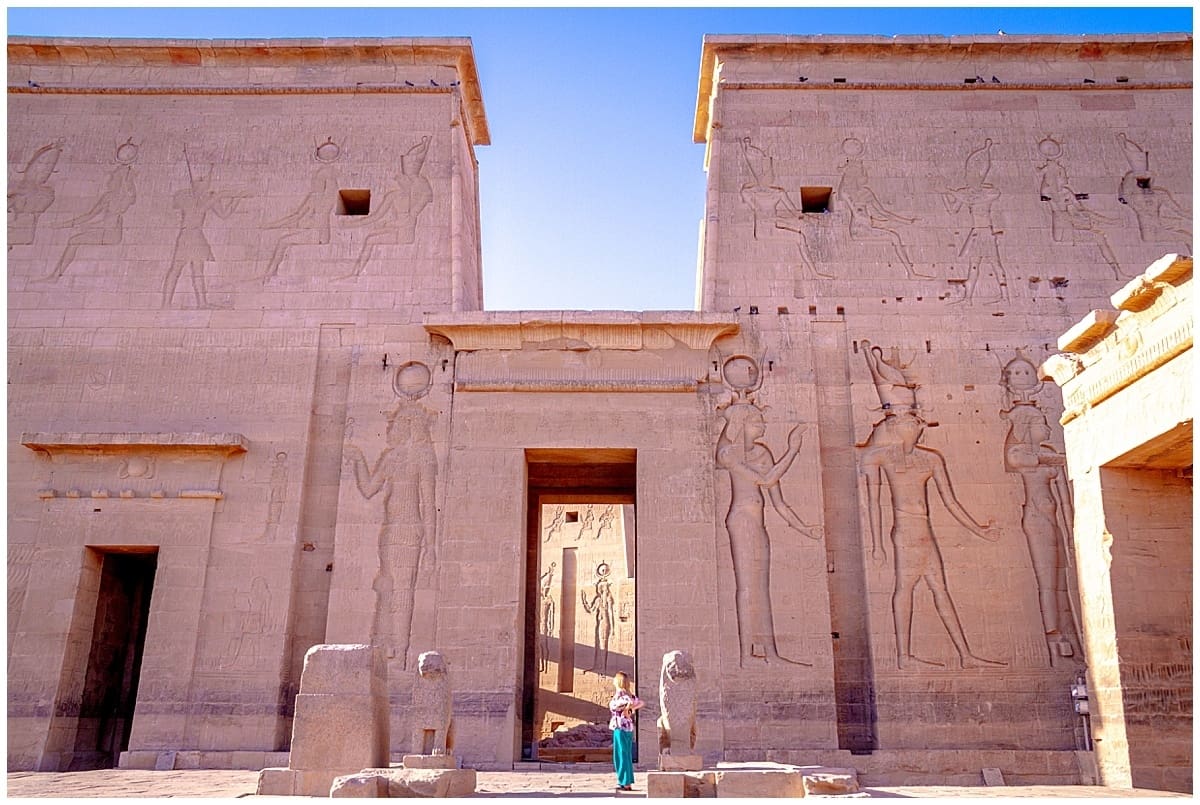
How to write a bucket list for Africa
From the fabled sands that swirl around the pyramids to the world’s largest Delta, the roar of the lion and the sweet-salt song of the grey go-away bird, it would take more than one lifetime to visit and understand Africa.
And, as you’ve probably worked out by now, we only have the one lifetime. One chance at that Africa bucket list.
So here’s one for you. Curated from years of travel, research, and direct experience. The best places to visit in Africa.
A (gulp) African bucket list, if you will. Complete with inside information on how to make it happen.
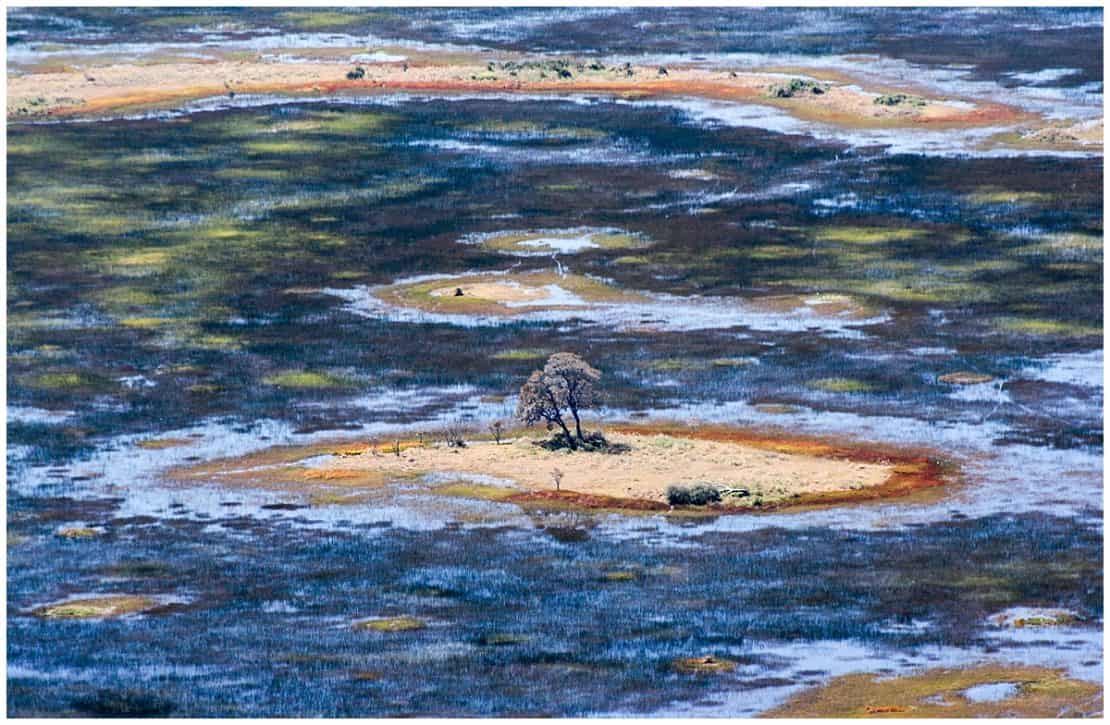
Drift on the Waters of The Okavango Delta
Bathing in blues and greens, the Okavango Delta offers safaris from the level of the water instead of the dust of the road.
It’s the world’s largest delta and yet it’s hundreds of miles from the ocean (800 miles from the Atlantic and more than a thousand miles away from the Indian ocean.)
You will find large animals here, like elephants and the snorting hippo, but you’ll see them from a mokoro: a fragile, water canoe.
Further north, you’ll find Chobe National Park, one of the best places in Africa for elephants.
Travel Tips for Botswana
Found in the south, right next to Namibia, Botswana is probably best known for being the home of the Okavango Delta (and perhaps also the No 1 Ladies Detective Agency Series.)
- When to go: The best time to see wildlife or go on a safari is between July and October. The rainy months are from January to March. During the rainy season, some areas may flood and can be inaccessible. If you want to beat the really hot days, you will want to travel between May and August.
- How to get there: take a small plane from Maun into the delta itself. Drive from Windhoek in Namibia to reach Maun. Flights connect regularly there from Joburg.
- Travel tip: Plan your trip in advance. The Okavango Delta struggles with the idea of spontaneous independent travel and the government has pursued a low volume, high cost tourism policy.
- Dress Code: Long sleeves and trousers in cool colours to fight the bugs.
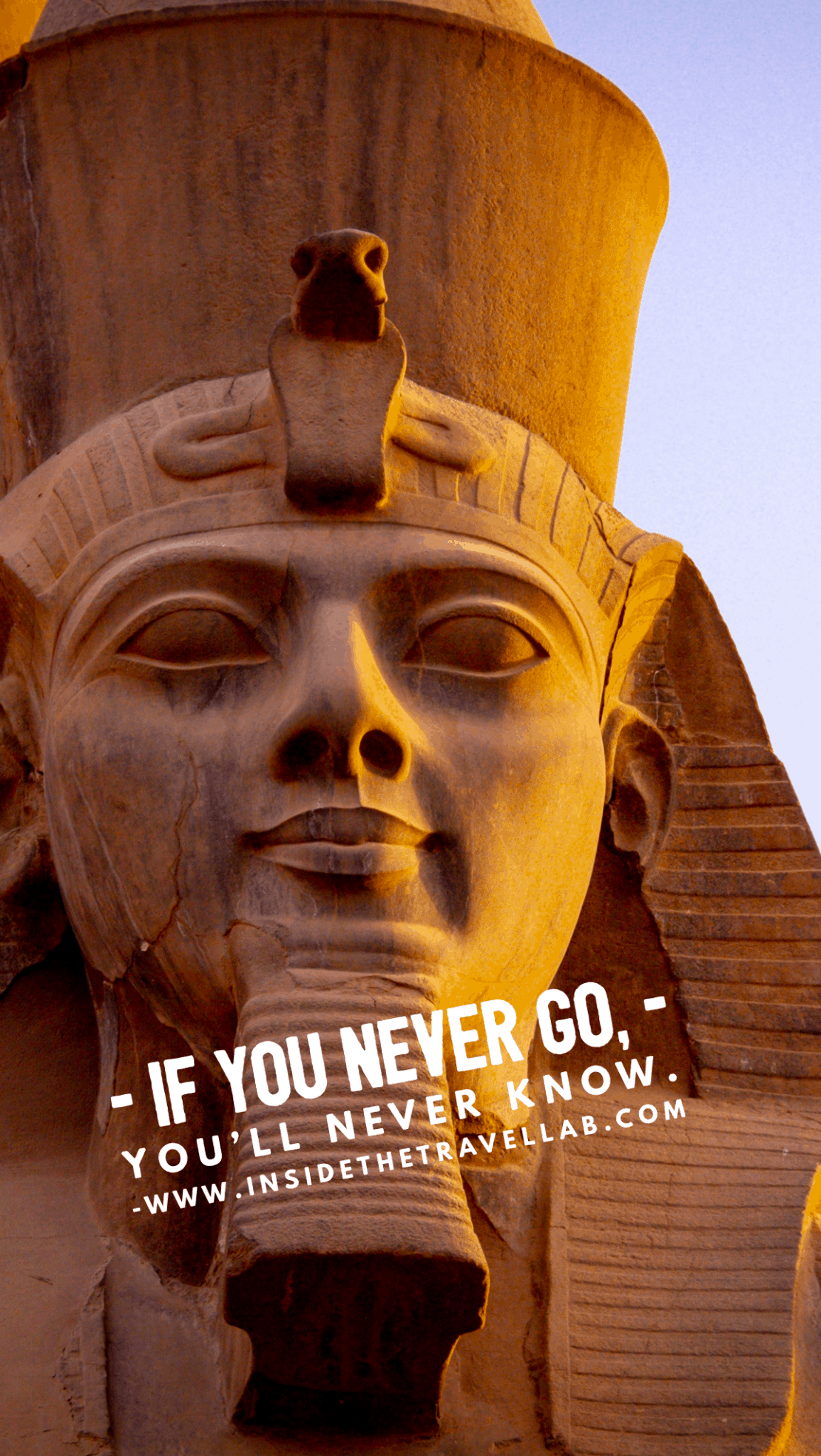
The Remains of Ancient Egypt
Few things fire up the imagination as much as the relics of ancient Egypt. And what’s even better than that is the realisation when you visit that, well, these ruins dazzle more than it was ever possible to dream.
They really are that good. Bucket list destination after bucket list destination.
The pyramids sit in the sands outside of Cairo but to see the towering stone at Aswan and the Valley of the Kings requires a journey along the Nile.
Both absolutely deserve their place on any Africa bucket list in a country bursting with UNESCO World Heritage Sites.
Travel Tips for Egypt
- When to go: the heat in Egypt can be absolutely crushing. For this reason, the best time of year to visit any part of Egypt is between October and April because the weather is at its most pleasant. Many people chose to tour the pyramids in December and January so the lines to the Pyramids of Giza will be long and the sights will be crowded.
- How to get there: You can visit the pyramids as a day trip from Cairo but for the rest, you’ll need to arrange transport from Cairo in advance (sometimes in convoy.)
- Currency: Egyptian pound
- Language: Arabic
- Best way of getting around: Cruise along the Nile, drive in convoy. Given the changes in the last few years always check up to date advice before travelling at all.
- Highlight: The Valley of the Kings (and not just because it’s my name)
- Travel tip: Avoid summer as it’s soul crushingly hot. Bring plenty of water and respectful sass to deal with the touts at the main archaeological sites.
- Dress Code: Conservative and cool – long sleeves and trousers. Wear a hat for the sun, no need for other cover.
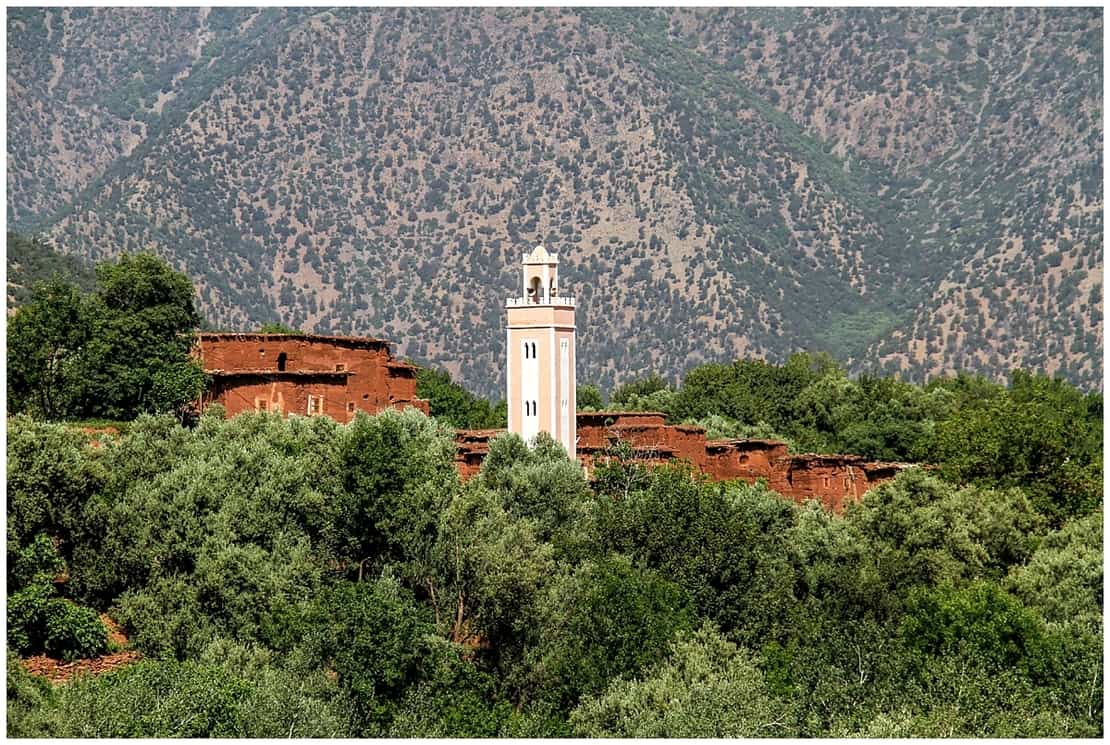
Hike The Atlas Mountains of Morocco
Morocco wears many colours designed to make you fall in love: her beautiful beaches, rust red film backdrops and the impossible ceramic blue found in the narrow streets of Essaouira.
But the fragrant Atlas Mountains stand out on the edge of the Sahara.
With hairpin curves, dusty lanes and orchard upon orchard of peach, prickly pear and plum, the Atlas mountains are perfect for hiking, resting, thinking and dreaming. You can walk through Berber villages, watching goats cling to treetops and seeing peak after peak layer up in the distance.
Travel Tips for Morocco
- Currency: Dirham
- Language: Arabic & French
- Best way of getting around: Independent driving, driving with a guide or travelling by bus.
- When to go: the best time to visit the Atlas Mountains is in April, May, and September. At this time it’s warm but not too hot, and the highest peaks will have a little snow, adding to the beauty of the views on offer.
- How to get there: Fly into Marrakesh and take a 90-minute drive via taxi or rent a 4×4 if you are feeling adventurous.
- Travel tip: Prepare for chaos on the roads and bring your own maps. Sat nav can be hard to come by.
- Dress Code: Conservative and cool. Think cotton long sleeves, long trousers and a cotton scarf to protect against the heat and wind in the dessert and the cold high up in the mountains.
- Unusual highlight: Just how much blue there is on the coast
Where are the best places for first time visitors to Africa?
First time travellers frequently seek out Egypt, Morocco, Kenya or South Africa – with good reason. Travel here can be more straightforward and more closely resemble home, if home is in the US, Australia or Europe.
Wherever you go, you’ll need to check your required vaccinations and antimalarials well in advance, develop some street smarts – and be prepared to leave a part of your heart in that rich red soil forever.
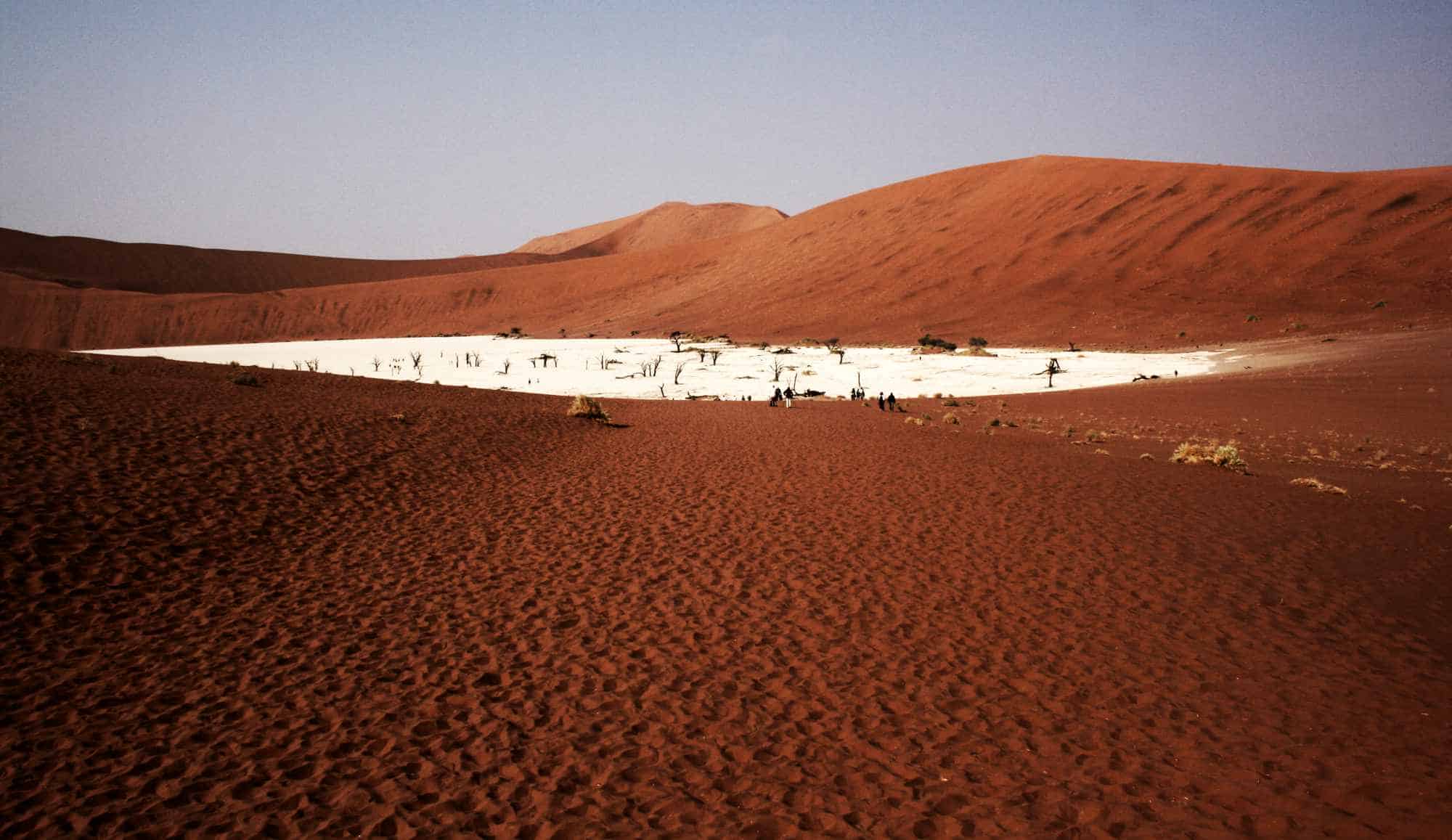
Standing in Death Valley in the Namib Desert
The Namib desert gives the country, Namibia, its name. It means wide open space yet a few small pockets deserve a special mention.
Dune 45 is the most accessible in the Namib Naukluft National Park. And it lies within a day’s reach of the haunting Death Valley, the area so dry the trees can’t even rot.
Fish River Canyon, too, ranks as one of the best places to visit in Africa, a one hundred mile long ravine that’s also 550 metres deep.
Read more about the Namib desert here.
Travel Tips for Namibia
Tucked down in the southern part of Africa, Namibia is famed for its red rust sand, giant dunes, skeleton coast and the world’s oldest desert. Swakopmund is billed as an adrenaline capital and Etosha National Park offers the sight of wildlife.
- Currency: Namibian Dollar
- Language: English
- Best way of getting around: Independent driving or driving with a tour guide.
- Highlight: those stunning red dunes in the world’s oldest desert, like Dune 45
- Travel tip: Pack for both hot and cold weather in the desert and plan your trip in advance. It’s not that easy to get into the Namib desert spontaneously.
- Dress Code: Casual but remember that deserts have extreme temperatures. Hot and cold!
- When to go: for wildlife, travel during the dry season which runs from June to October.
- How to get there: Most people fly into the Hosea Kitako International Airport located in Windhoek byway of Johannesburg. Namibia is a popular self-drive destination so you can hire a car and drive to the Namib desert yourself. However, you’ll need to arrange permits so it can be easier to travel with a guide.
The Snow-Capped Peak of Kilimanjaro
Peaceful Tanzania holds three places which belong on any Africa travel bucket list: the Serengeti National Park, the stunning Ngorongoro Crater and the snow-capped peaks of Kilimanjaro.
Hiking Mount Kilimanjaro takes several days, through lush green plantations, scraggy bare rock and finally snow and ice before reaching 5895 metres, a point higher than the base camp on Everest.
Away from the mountain, Tanzania offers incredible safari experiences and soft white beaches ripe with cinnamon and vanilla pods on Spice Island Zanzibar in East Africa.
Travel Tips for Tanzania
- When to go: visit between January and March if you enjoy the cold and possibly snowy weather. If you prefer to stay warm, you can also visit the area between June and October when the weather is more forgiving.
- How to get there: fly direct to Kilimanjaro International Airport or into the capital Dar Es Salaam and travel up by road
- Currency: Tanzanian shilling
- Language: officially English and Swahili, also many others.
- Best way of getting around: long haul bus or ferry across to Zanzibar.
- Highlight: the snowy peaks of Kilimanjaro
- Travel tip: take the slow route up to the mountain to avoid crowds and stand a better chance of beating altitude sickness.
- Dress code: dress conservatively where possible in light, long cotton clothes.
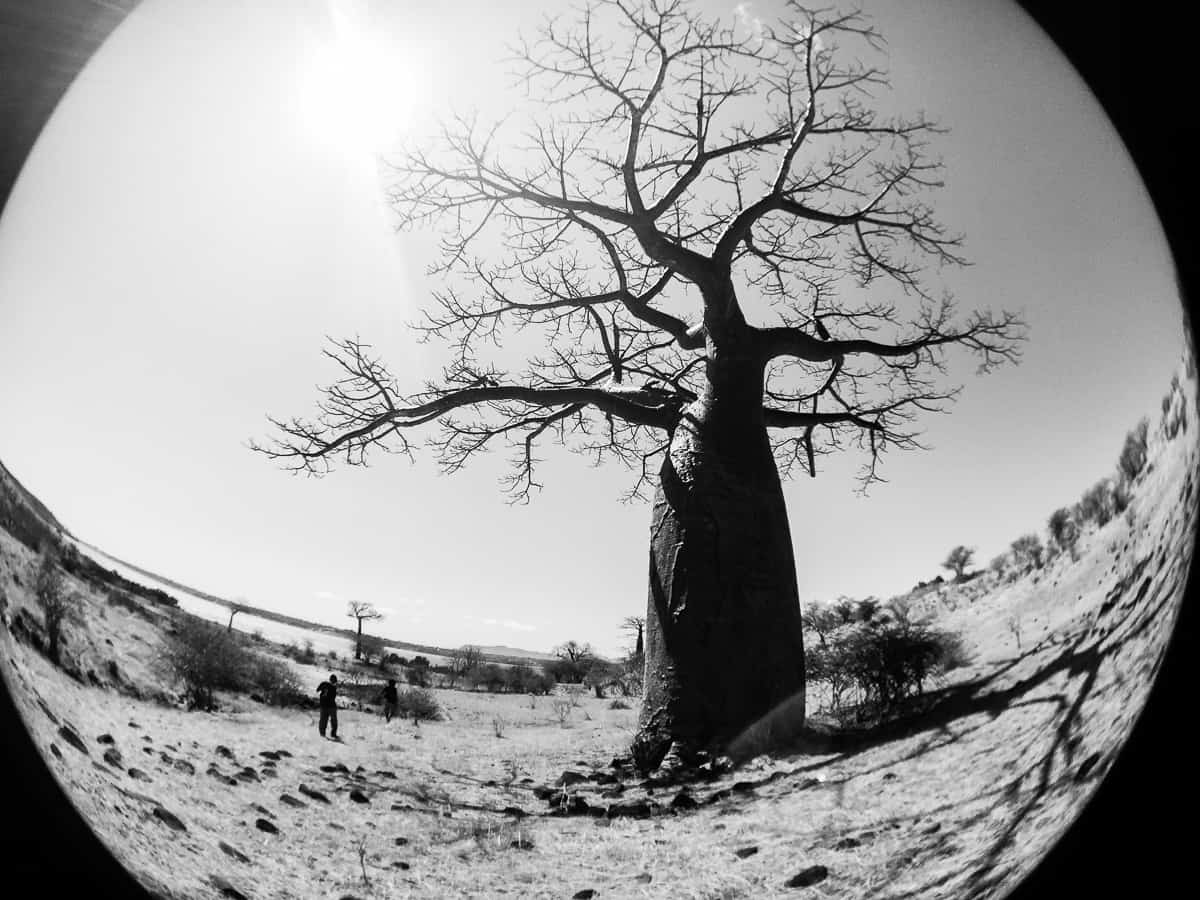
The Baobab Trees of Madagascar
Madagascar excels in striking, mesmerising wildlife and landscapes, from the rust-red sharp-toothed rocky tsingy to the curious chameleons and the lemurs that leap through the air.
And the beaches aren’t too bad, either.
However, it’s those bulbous baobab trees that really captured my heart. These magnificent works of art from nature can grow up to 30 metres tall and 11 metres wide. They store thousands of gallons of water within their trunks to allow them to survive through the dry periods.
Travel Tips for Madagascar
- Currency: Malagasy ariary
- Language: Malagasy and French
- Best way of getting around: Independent driving, driving with a guide or travelling by bus. Internal flights make navigating the island manageable.
- Highlight: lemurs, baobab trees and chameleons.
- Travel tip: Bring torches and suitable outdoor gear to catch sight of nocturnal chameleons.
- Dress Code: Relaxed but long sleeves and trousers make sense in the jungle and on the tsingy to protect against scrapes, sunburn and serious mosquito-borne disease.
- When to go: Since the rainy season can cause floods, travel between May until October.
- How to get there: Baobab trees are found across Madagascar, however the famous avenue lives between Morondava and Belon’i Tsiribihina in the Menabe region of western Madagascar. Fly into Tana and travel on from there.
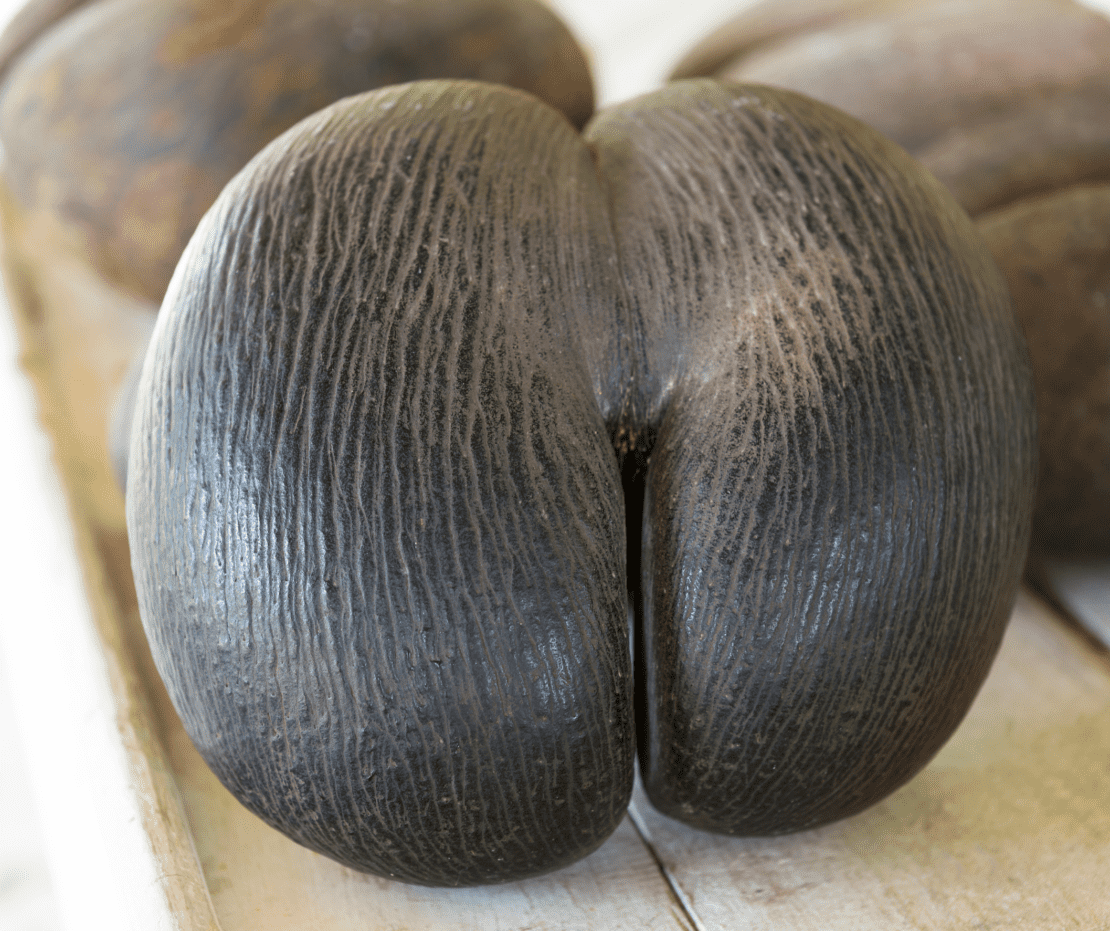
Seeing Coco de Mer in the Seychelles
Beaches, beauty & boulders. The Seychelles are those kind of islands, the kind that inspire the word paradise and make troubles drift away while allowing space for dreams to settle in.
They also have an eco-system like nowhere else in the world. Take Coco de Mer, a rare palm tree native to the Seychelles with an iconic, voluptuously shaped giant seed.
Many people miss the Seychelles from their Africa bucket list. But that’s a mistake. There’s more than just sun and sand – and the sun and sand is mighty fine too.
Travel Tips for the Seychelles
- How to get there: international flights land in Mahe, with a number of great hotels a short drive away (the Banyan Tree Seychelles for one.)
- How to get around: you need separate flights to reach the other islands, such as the private island of Desroches with its white, white beaches and eco-driven research.
- Currency: Seychellois Rupee
- Language: Officially English, French and Creole
- Best way of getting around: seaplane and high speed ferry.
- Highlight: pristine beaches and the voluptuous Coco de Mer.
- Travel tip: take part in an eco walk if you can, to learn more about the environment there.
- Dress code: anything goes on the resorts. Conservative, cool and covered up elsewhere.
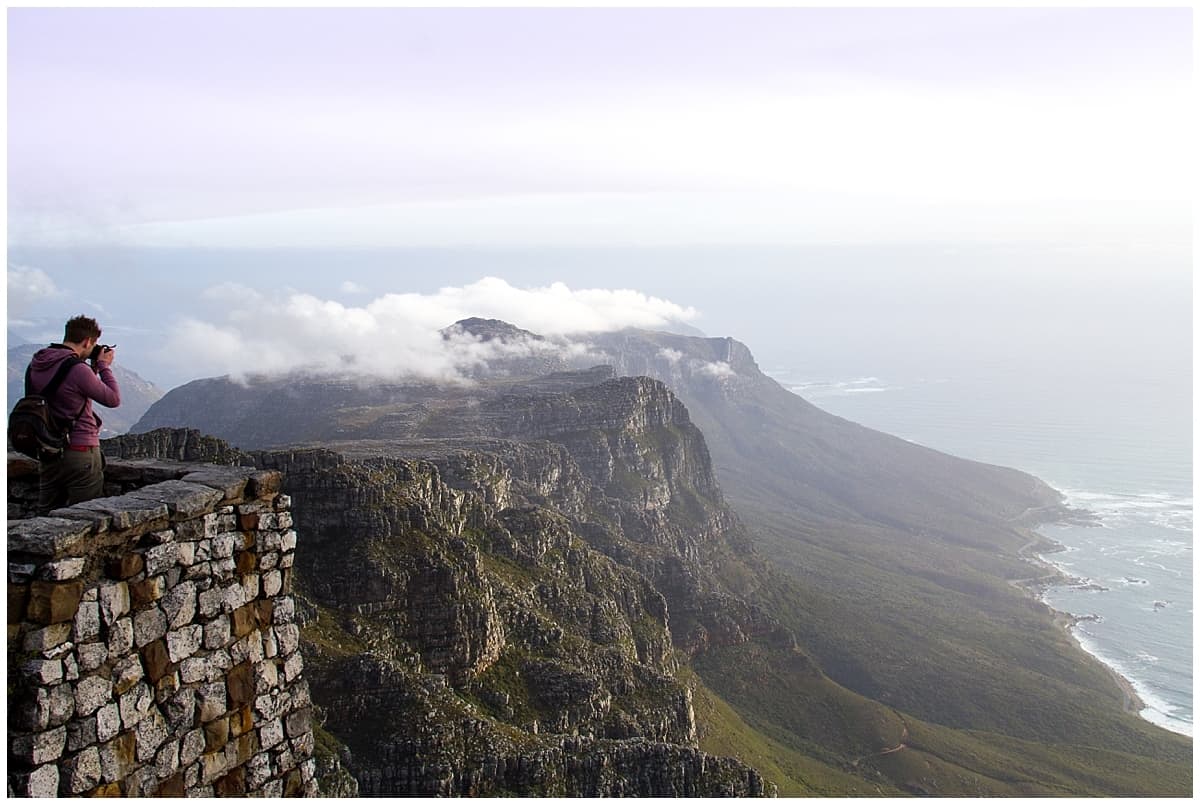
Summit Table Mountain in Cape Town
Cape Town is the most visited part of the whole of the continent of Africa. Yet you can still stand on Table Mountain and feel as though you are the only person in the world, staring across at the land melting into the water as if for the first time. It’s easily accessibly via cable car or if you’re feeling adventurous, you can climb up and back in a day.
That’s not all South Africa has to boast about. Kruger National Park, the Elephant Coast, the Stellenbosch wine region and the Garden Route all help to make up South Africa.
Find out why South Africa is called the Rainbow Nation here.
Walk in Mandela’s footsteps
Nelson Mandela didn’t just change politics in South Africa, he changed the possibility of politics across the world. The Apartheid Museum in Johannesburg creates a vivid experience of what apartheid was, how insidiously it came about and what legacy it leaves today.
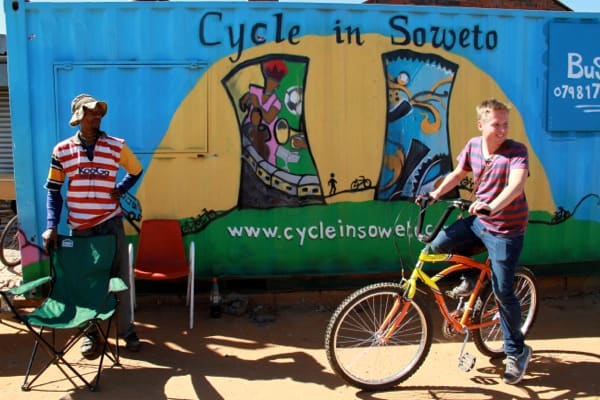
But it’s the living, breathing, brightly coloured, braai serving neighbourhood of Soweto that shows Mandela’s footprint the most.
Travel Tips for South Africa
- How to get there: South Africa is one of the most accessible parts of Africa, with frequent flights into both Cape Town, Durban and Johannesburg. Distances are still vast, though, and the country is incredibly varied.
- Currency: South African rand.
- Language: 10 official languages out of at least 35 indigenous languages. English is widely spoken.
- Best way of getting around: to travel great distances, you need a lot of time on the road of you will need to fly between, say Cape Town and Joburg. Within the regions, hire a car and drive.
- Highlight: Table Mountain
- Travel tip: develop great street smarts. It’s a fabulous country but not for the naive.
- Dress code: anything goes in Cape Town.
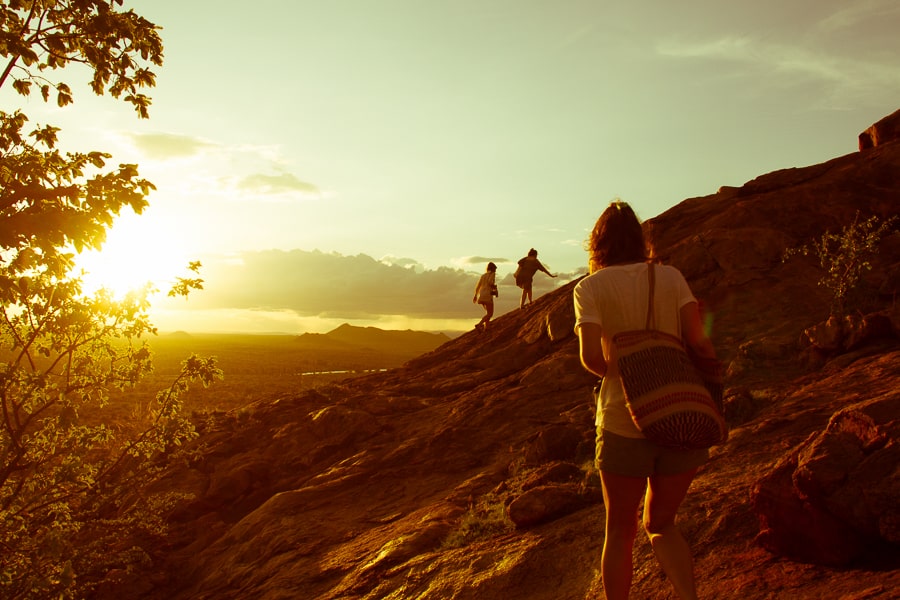
Visiting the Real Pride Rock in Kenya
The creators of Simba, Pumba and the rest of the gang didn’t imagine as much as you might have thought. On a research expedition to Kenya, they discovered a national park with that curious jutting red stone.
It takes an internal flight to reach the place that inspired Pride Rock but it’s absolutely worth it.
Expect safaris over dry, red earth for sure but also across bright green waterways and make time for cosmopolitan city life in Nairobi.
Travel Tips for Kenya
- How to get there: fly into Nairobi and take connecting flights from there.
- Currency: Kenyan shilling
- Language: Bantu Swahili and English
- Best way of getting around: Independent driving, driving with a guide or internal flights to cover larges distances.
- Highlight: those famous safari drives.
- Travel tip: bring lots of memory cards for all those safari pics…
- Dress Code: City slick in Nairobi and safari chic elsewhere. This is a fashionable kind of place (but covering up helps, as always, in the fight against sunburn and mosquitoes.)
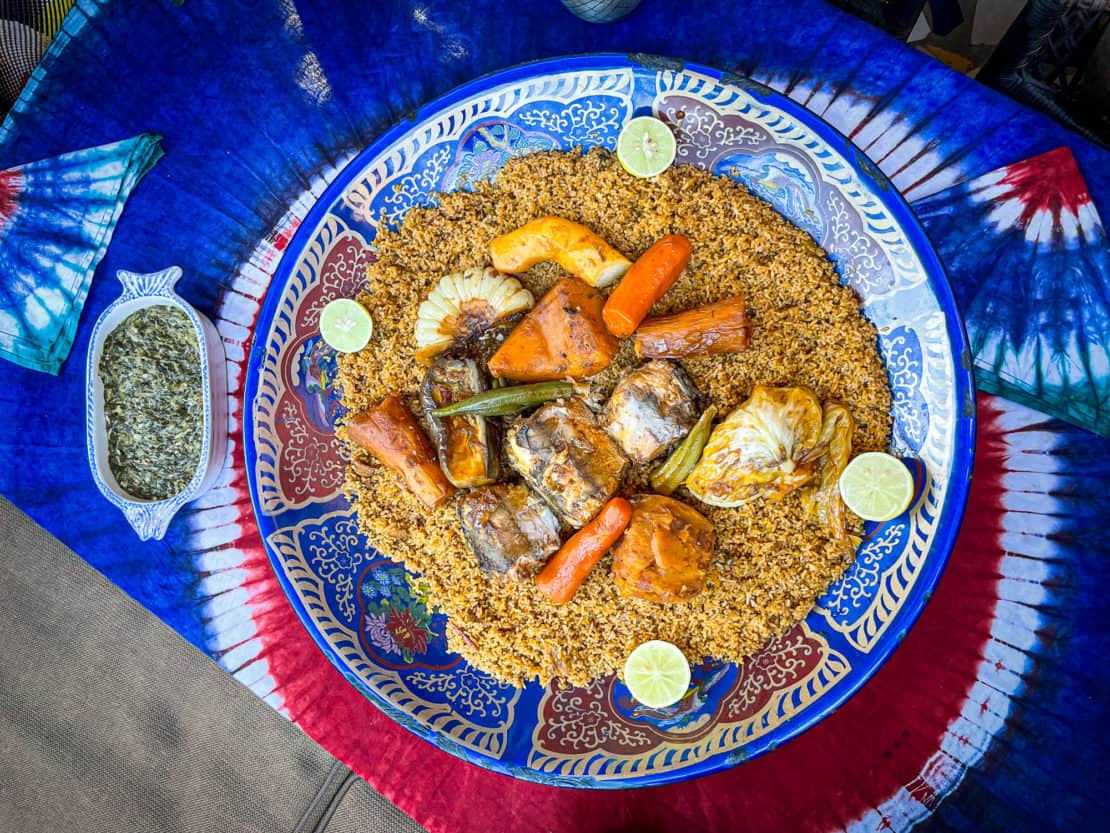
Take a cooking class in The Gambia
Hang on a second. A cooking class? In an article that promises to talk about how you can create your very own Africa bucket list.
Hear me out. The Gambia in West Africa is famous for wild golden beaches and bird life. But it’s also a great place to meet Ida, an energetic entrepreneur who is passionate about preserving Gambian culture – and showing her guests a good time.
So, check out my experience with Gambian food and drink here and then come back and tell me it doesn’t belong on an African travel bucket list!
Travel tips for The Gambia
How to get there: fly to Banjul and then it’s a short transfer for most travel hotspots.
- Currency: dalasi
- Language: English and tribal languages
- Best way of getting around: self drive or join a tour
- Highlight: Ida’s cooking class and floating on the River Gambia
- Travel Tip: pack bug spray and be ready to haggle
- Dress code: cover shoulders and down to knees but hair can be uncovered.
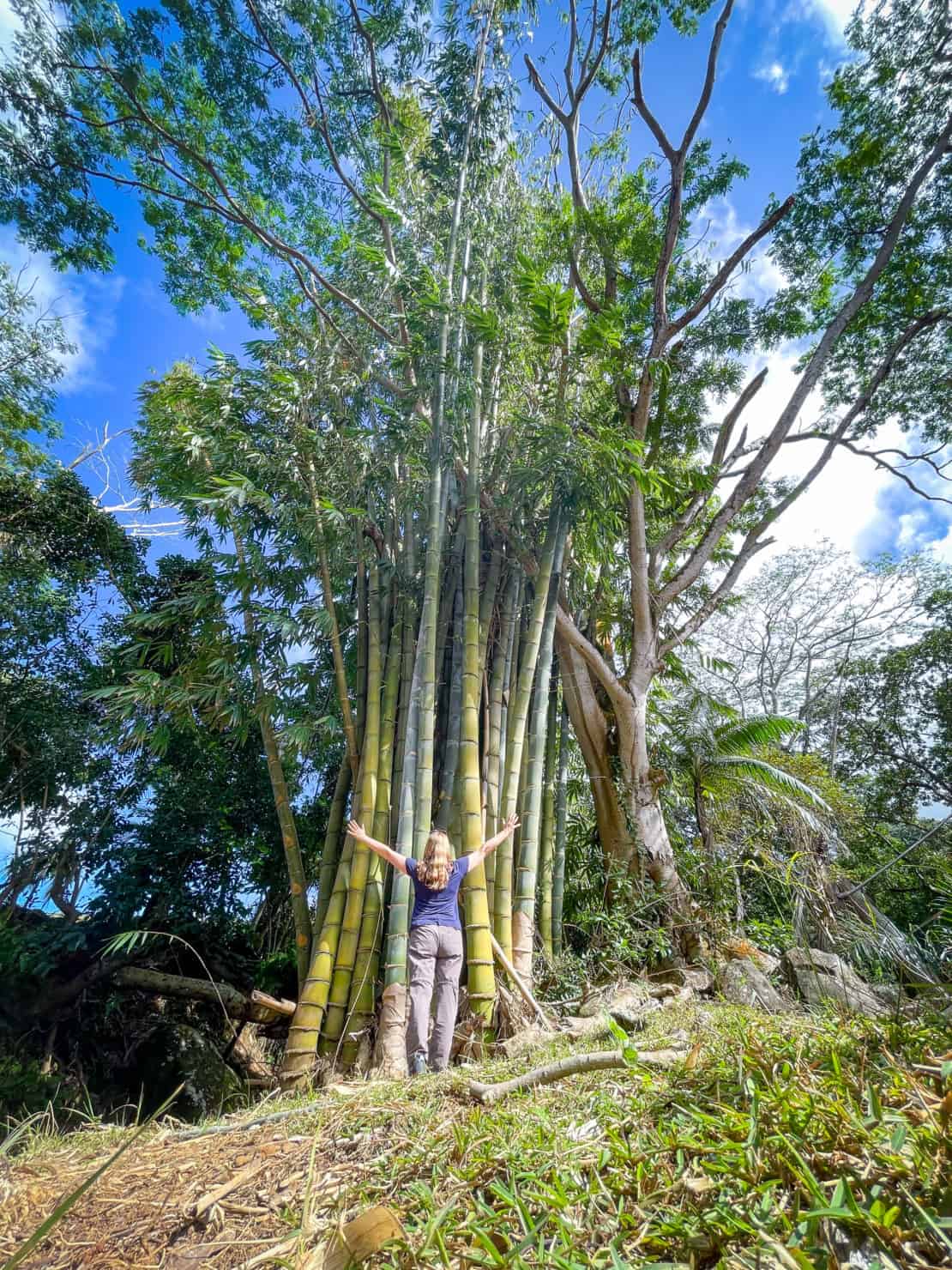
Fall in Love With Mauritius
Another often overlooked country when it comes to Africa bucket lists, Mauritius has so much to offer beyond the (admittedly brilliant) beaches and reefs.
Take Black River Gorges National Park, for example, home to nine species of bird that are only found in Mauritius.
Then there is the curious reef that surrounds the island, the UNESCO Biosphere and the unmistakeable peak of Le Morne.
Travel Tips for Mauritius
- Currency: Mauritian rupee
- Language: French, English and Creole
- Best way of getting around: self drive or join a tour
- Highlight: exploring all the examples of ecotourism in Mauritius
- Travel Tip: brush up on your French before you go
- Dress code: pretty much anything goes but a stylish twist is appreciated
See also why culture and traditions in Mauritius matter so much here.
More For Your Africa Bucket List
So far, we’ve talked about experiences for your Africa bucket list that I have tried and tested with my own fair hands (well, seen and travelled through. You know what I mean!)
But there are other things to do that make it onto all the African bucket lists. And, secretly or not so secretly, I’d like to add them to mine.
Maybe, one day you’ll check back here and find that I’ve seen them all. I can but hope.
Gorilla Trekking in Rwanda
Seeing the endangered mountain gorillas up close is pretty classic as bucket lists go. Nicknamed gorilla trekking, this bucket list experience is most commonly associated with Rwanda but you can do it in Uganda as well. People who have done it recommend sturdy shoes and reasonable fitness levels.
Victoria Falls
Thundering across the border between Zimbabwe and Zambia, Vic Falls is the largest waterfall in the world – and therefore belongs on any ultimate Africa bucket list. Perhaps throw in a hot air balloon ride to explore the mist even further.
Lake Malawi
Lake Malawi stretches between Malawi, as you may have guessed, but also Mozambique and Tanzania.
South Luangwa National Park in Zambia
Famous for hippos, in a continent bursting with wildlife and national parks, South Luangwa National Park strides onto travel bucket lists with aplomb.
Read more travel guides about Africa
- Namibia and the oldest desert in the world
- The best beaches in Madagascar
- What safari guides really fear in Botswana’s Okavango Delta
- How the red tsingy in Madagascar are the perfect antidote to travel overload.
- The real pride rock
- Why Ouirgane valley in Morocco deserves your time
- The highs and lows of driving in Morocco
- What you need to know about trekking Kilimanjaro

Egypt and Seychelles are my winners :)
Two extremes – dry and wet!
Hi Abi, I’m still following you… It’s always a pleasure to read your articles.
I’ve been (sometimes many times) to Seychelles, Botswana, Egypt, Morocco, Namibia, South Africa, Malawi,… yes, I’m lucky too. I’ve loved both of those countries, for different reasons of course.
But in September 2018 I’ve explored Zambia, a bit of Zimbabwe, Cape Town, and Namibia once more. Even if I love Botswana and Namibia, I must say that Zambia was a beautiful surprise (when we talk about animals, a lot of animals): they are all in a very good health, protected but in the wild, and the rangers there are very respectful of their space and environment. Beautiful landscapes too, and a welcoming population. If i had to go for another safari I’m pretty sure that I would do another mix between Botswana (Okavango) and Zambia.
:-)
Hello – how absolutely lovely to hear from you! What a beautiful list – and so interesting to hear about your experiences in Zambia. I haven’t been but your recommendation has shot it right to the top of my list! Hope life is treating you well :-)
All excellent recommendations! May I add another two, both in Ethiopia:
The rock-hewn churches at Lalibela are out of this world. And the Simien Mountains offer some of the best scenery on the entire continent.
Ethiopia is an incredible, beautiful country. Hopefully the political situation there settles down soon.
Absolutely! Always good to hear more recommendations – and I would love to visit Ethiopia one day when the time is right.